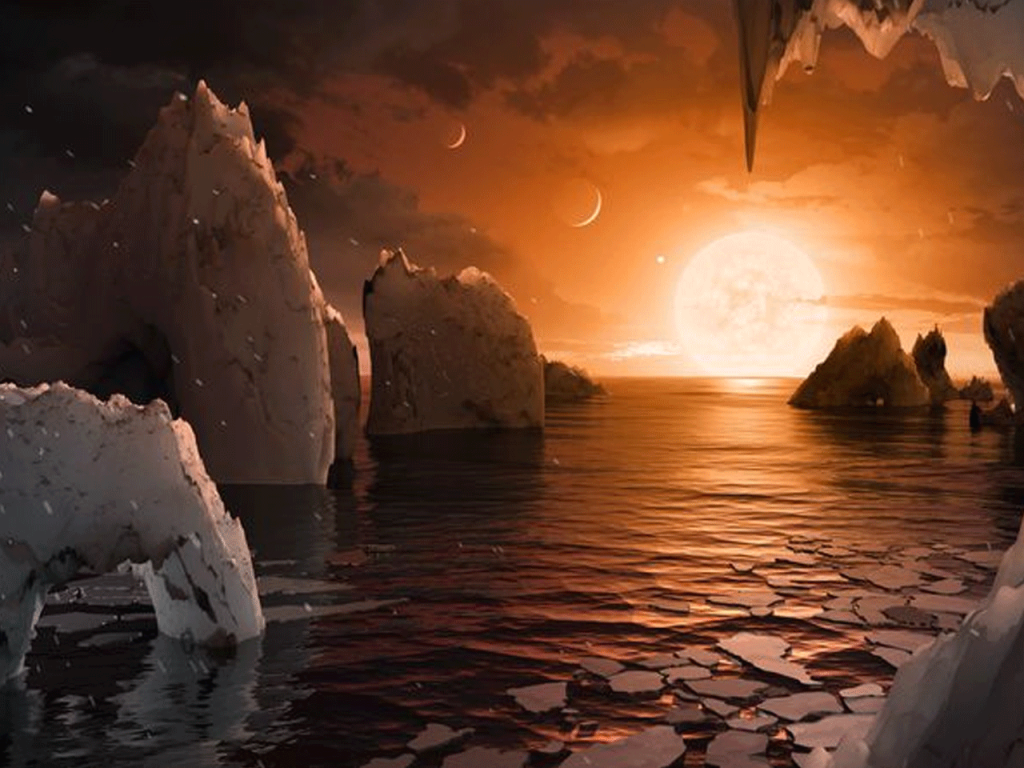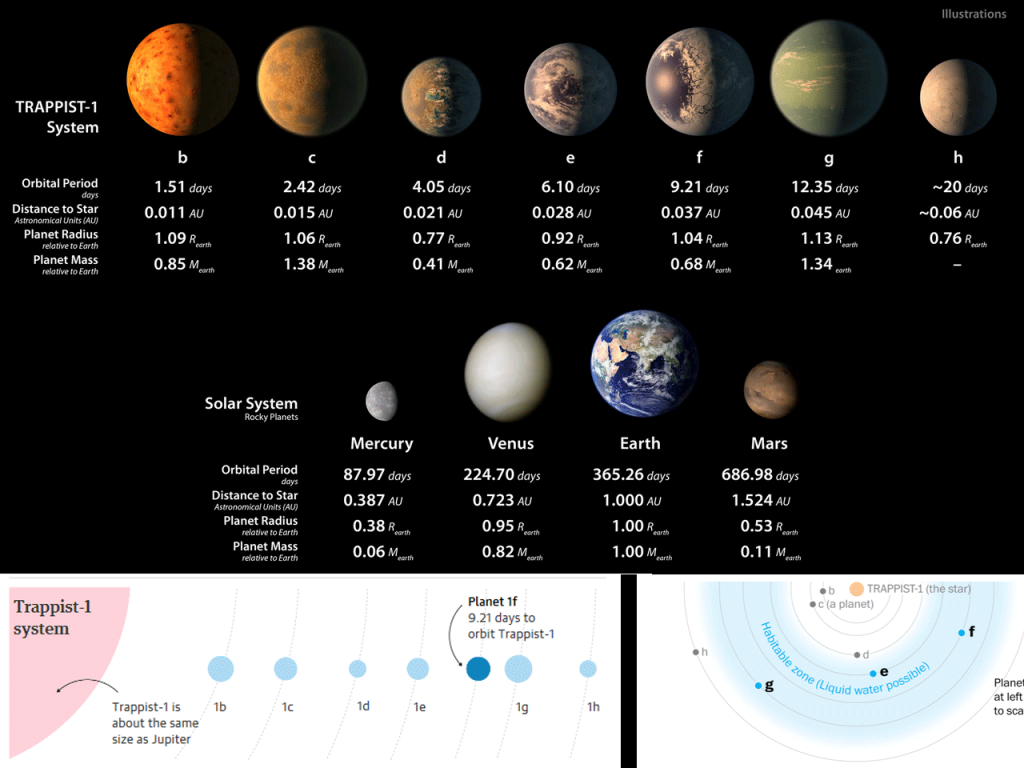When Scientists announced the new findings on planets that orbit stars other than our sun, Social media reacted much as it always does.
Astronomers have discovered a system of seven Earth-sized exoplanets orbiting a nearby star, at least three of which sit in the star’s temperate “habitable zone,” where liquid water could exist.
The proximity of the planets’ host star, known as TRAPPIST-1, to our own — it lies just 39 light years away — immediately rockets this system to one of the best places to look for life outside our own solar system.
TRAPPIST-1 is a small, ultra-cool dwarf star. Because the planets all orbit very close to it — the orbital periods of the six innermost planets range from 1.5 to just more than 12 days — those six at least could have surface temperatures between zero and 100 degrees Celsius.

Astronomers are especially excited about the TRAPPIST-1 system because of how much easier it will be to characterize these planets’ atmospheres.
The first step in finding life outside our own planet is to find a planet like our own: small, rocky, and at just the right distance from the star that liquid water could exist on its surface.
That’s why an announcement today from NASA is so exciting: The space agency, along with partners around the world, has found seven potentially Earth-like planets orbiting a star 40 light-years away.
“It’s the first time that so many planets of this kind are found around a same star,” Michaël Gillon, the lead author of the Nature paper announcing the discovery, said in a press conference. “The seven planets … could have some liquid water and maybe life on the surface.”
Three of the planets are directly in the star’s habitable zone, meaning water can mostly likely exist on the surface of them. One of them, Gillon said, has a mass “strongly to suggest a water-rich composition.” And it’s possible that the other four could have liquid water, too, depending on the composition of their atmospheres, the astronomers said.

The distance at which the planets orbit Trappist-1 is comparable to the distance of Jupiter to its moons. All the planets are believed to be rocky, and are all believed to be around the size of Earth, give or take 10 to 20 percent.
Still, even if no life is discovered on them, the TRAPPIST-1 planets present an unprecedented new window on how solar systems work. Though the planets are more or less Earth-size, their varying densities and distances allow for detailed comparisons of the worlds. It’s almost as if someone designed an experiment in planet formation, controlling for the bodies’ size.
The TRAPPIST-1 astronomers say they debated what a sunset may look on one of the tightly clustered planets. Despite its name, the red dwarf would emit a salmon hue, they decided, its darkest tones hidden in infrared, beyond the deepest red humans can see. The exoplanets could be frozen worlds, their icy crusts covered with cracks like the surface of Europa. Their terrain could carry the signs of water long gone, like channels carved by ancient floods on Mars. Or there could be water, lapping gently over rock beneath the salmon-colored sunset. And with luck, there might be something stirring underneath.




